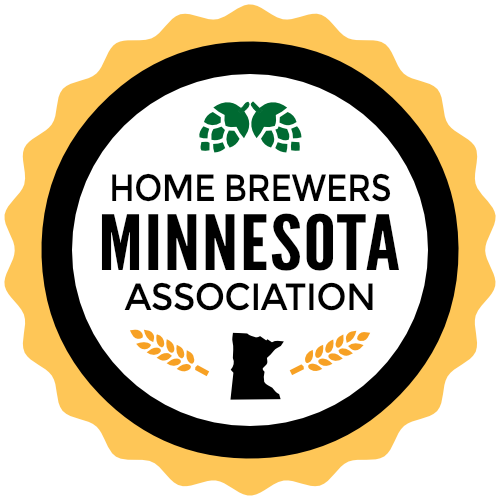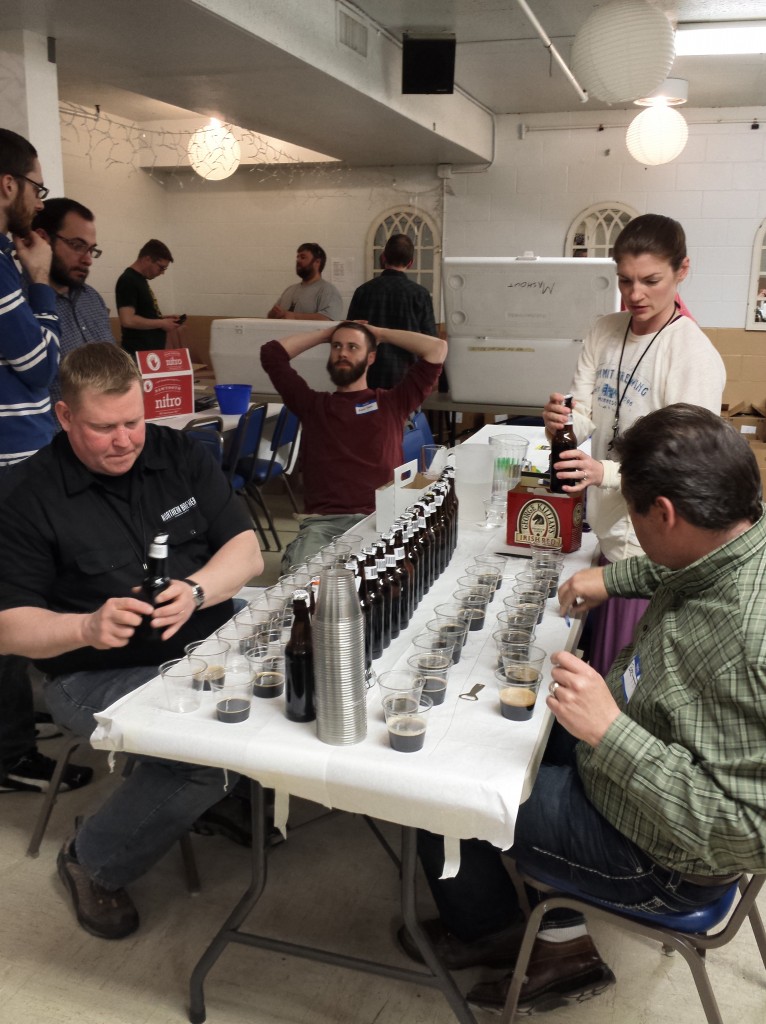Posts
Cider lovers,
We will be doing another Club Cider Buy of fresh-pressed, unpasteurized cider for fermenting this year at Barley John’s during Learn to Homebrew Day on November 8th. As usual we will try to arrive near the beginning of the event, but these things always take longer than expected so if you are on a tight schedule please find someone else to take care of your pickup, and let the coordinator know in advance.
The price will be $4 a gallon and you will need to supply your own 5 gallon vessel(s), ideally 5+ gallon buckets. If you are interested in cider, please let me know how much you would like in 5 gallon quantities by emailing me directly, or using the form below.

2013 MHBA Cider Buy
(more…) Read More
 Due to an unfortunate scheduling conflict, our October meeting at Fulton will be delayed one week, until October 18th from 12:00 noon until 3:00pm. We are working on a couple special items for the 18th meeting and will have more information next week.
Due to an unfortunate scheduling conflict, our October meeting at Fulton will be delayed one week, until October 18th from 12:00 noon until 3:00pm. We are working on a couple special items for the 18th meeting and will have more information next week.
We apologize for the delay and any confusion this may have caused.
Read MoreThis year’s Byggvir’s Big Beer Cup was the 8th annual event, hosted at the Minnesota Renaissance Festival. There were over 70 volunteers that worked tirelessly to make the competition a success. This year there were nearly 300 entries received. Thanks to everyone who entered! 
Congratulations to everyone who places in this year’s Byggvir’s Big Beer Cup! Here are the winners from the MHBA
Read MoreA quick collection of notes this week.
Once again this year the Minnesota Home Brewers Asociation will have a cider buy. We will be taking reservations for fresh-pressed, unpasteurized apple cider, appropriate for fermenting. Look for more details coming up in the next few weeks.
Itching to get your beers submitted to another homebrew competition? Check out the Nordeast Big River Homebrew Competition, organized by the Nordeast Brewers Alliance! Entries are due by this Sunday, the 28th.
Read MoreByggvir’s Big Beer Cup at the Rennisance Festival is happening this weekend. Have plans and can’t make it to the festival to volunteer? Come out to Town Hall Brewery on Wednesday, September 24 at 6:30 for the Awards announcement live! One beer and one cider or mead will each be selected to be brewed by Mike Hoops from Town Hall Brewery and Tim Roets from Sponsel’s Minnesota Harvest Orchard Winery in Jordan, respectively.
Read MoreJust a quick reminder about this Saturday’s meeting at Day Block Brewing in Minneapolis.
Day Block is located in a cool historic building next to Grumpy’s and our group will be hanging out in the tap room. Assistant Brewer, Dan Banks, will be available for tours from 1-3 pm. They have great beer and food, and we should have a server or two just for our group, so I hope you can join us. (There is another event happening that day, but home brew is welcome as long as it is served discreetly.)
Read MoreByggvir’s Big Beer Cup, the homebrew competition sponsored by the Minnesota Home Brewers Association and happening at the Minnesota Renaissance Festival later this month, is still looking for some volunteers to steward and judge. No matter if you have years of experience or have never helped at a homebrew competition, this is the event for you. Go sign up on the Byggvir’s Big Beer Cup, get in to the festival for free and help out at a fantastic homebrew competition!
(more…)
Congratulations to all the Minnesota Home Brewers Association winners at the 2014 Minnesota State Fair Homebrew Competition.
Read MoreOccasionally we post notices about homebrew competitions here and in our discussion areas. If you are a newer home brewer you may have heard people talking about competitions and judging but you may not really know what they are all about. The short answer is that home brew competitions are an organized way for home brewers to receive feedback on their beer from people who have studied beer styles and beer defects and have taken certification exams to test their knowledge. The BJCP, or Beer Judge Certification Program is the organization that oversees most competitions, provides guidelines on beer styles and provides certification exams to potential beer judges.
If you are interested in becoming a better brewer, or learning more about beer in general, you should look into home brew competitions. Entering your beers is a great way to get honest feedback about your beer, what problems are in your beers and how you may go about trying to eliminate some of those problems. In addition to entering your beers, volunteering at a home brew competition is a fantastic way to interact with other experienced home brewers and to learn about the home brew competition process. There are lots of volunteer positions that require no previous knowledge, experience or certification!
Here are a few upcoming homebrew competitions you may want to consider entering, or volunteering to help at! If you have questions about any of these, feel free to ask on our email list or facebook page, or ask any of the club leadership for more information!
State Fair Homebrew Competition
If you have time this weekend, there may still be a need for volunteers to help at the State Fair Homebrew Competition. Judging starts, Friday the 15th so you have to act quick. Send an email to [email protected] immediately for more information. Note: Signup on the web has been disabled so if you want to help, email now.
Beer Dabbler Home Brew Competition
If you are thinking of attending the Summer Beer Dabbler on September 6, consider entering a homebrewed beer into the Beer Dabbler Summer Home Brew Competition. The entries are dropped off at the beer festival and winners announced the same day!
Byggvir’s Big Beer Cup Home Brew Competition
At the end of September is the Renaissance Festival Home Brew Competition. This is a home brew competition with judging happening at the Renaissance Festival. This competition is specifically geared to newer brewers and to introduce people to beer judging. It’s a perfect opportunity to get feedback as a brewer and to see what a homebrew competition is all about.
Read MoreThis Saturday, come join other members of the Minnesota Home Brewers Association for our celebration of Mead Day at Midwest Supplies!
Several award winning mead makers from the MHBA will doing demonstrations and giving tricks and tips to mastering the art of fermenting honey. Come join us in the parking lot to ask questions and start your mead making!
Read More

